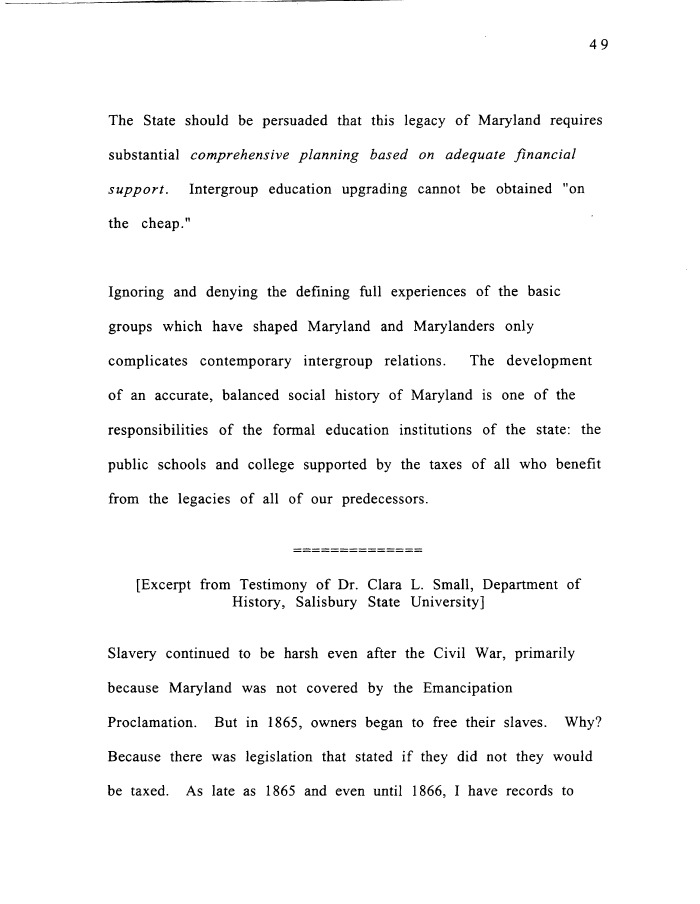 |
||||
|
TASK FORCE TO STUDY THE HISTORY AND LEGACY OF SLAVERY IN MARYLAND (Final Report) 1999/12/31 MdHR 991422 MdHR 991422, Image No: 58 Print image (35K) |
 |
||||
|
TASK FORCE TO STUDY THE HISTORY AND LEGACY OF SLAVERY IN MARYLAND (Final Report) 1999/12/31 MdHR 991422 MdHR 991422, Image No: 58 Print image (35K) |
| 49 The State should be persuaded that this legacy of Maryland requires substantial comprehensive planning based on adequate financial support. Intergroup education upgrading cannot be obtained "on the cheap." Ignoring and denying the defining full experiences of the basic groups which have shaped Maryland and Marylanders only complicates contemporary intergroup relations. The development of an accurate, balanced social history of Maryland is one of the responsibilities of the formal education institutions of the state: the public schools and college supported by the taxes of all who benefit from the legacies of all of our predecessors. [Excerpt from Testimony of Dr. Clara L. Small, Department of History, Salisbury State University] Slavery continued to be harsh even after the Civil War, primarily because Maryland was not covered by the Emancipation Proclamation. But in 1865, owners began to free their slaves. Why? Because there was legislation that stated if they did not they would be taxed. As late as 1865 and even until 1866, I have records to |